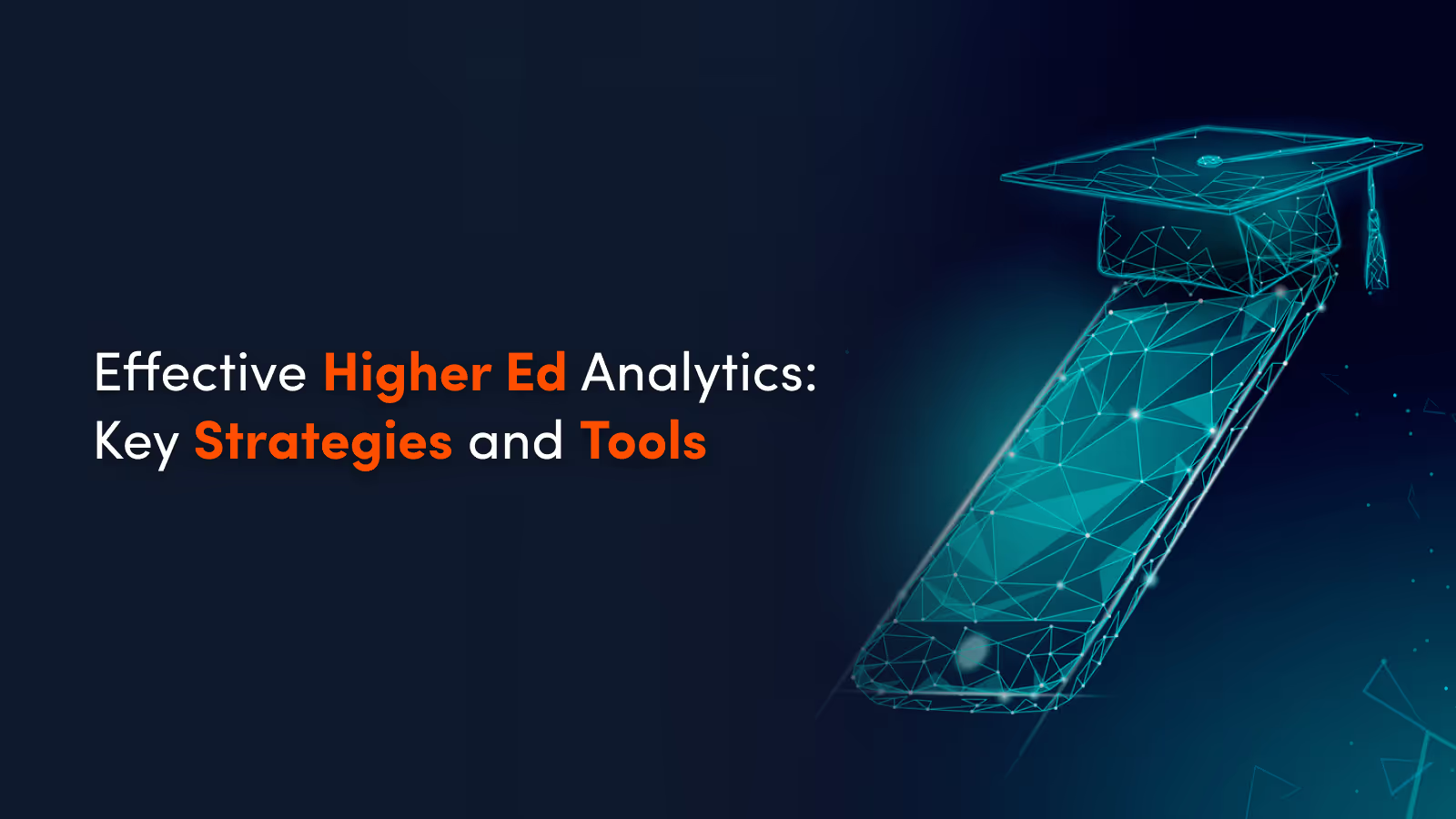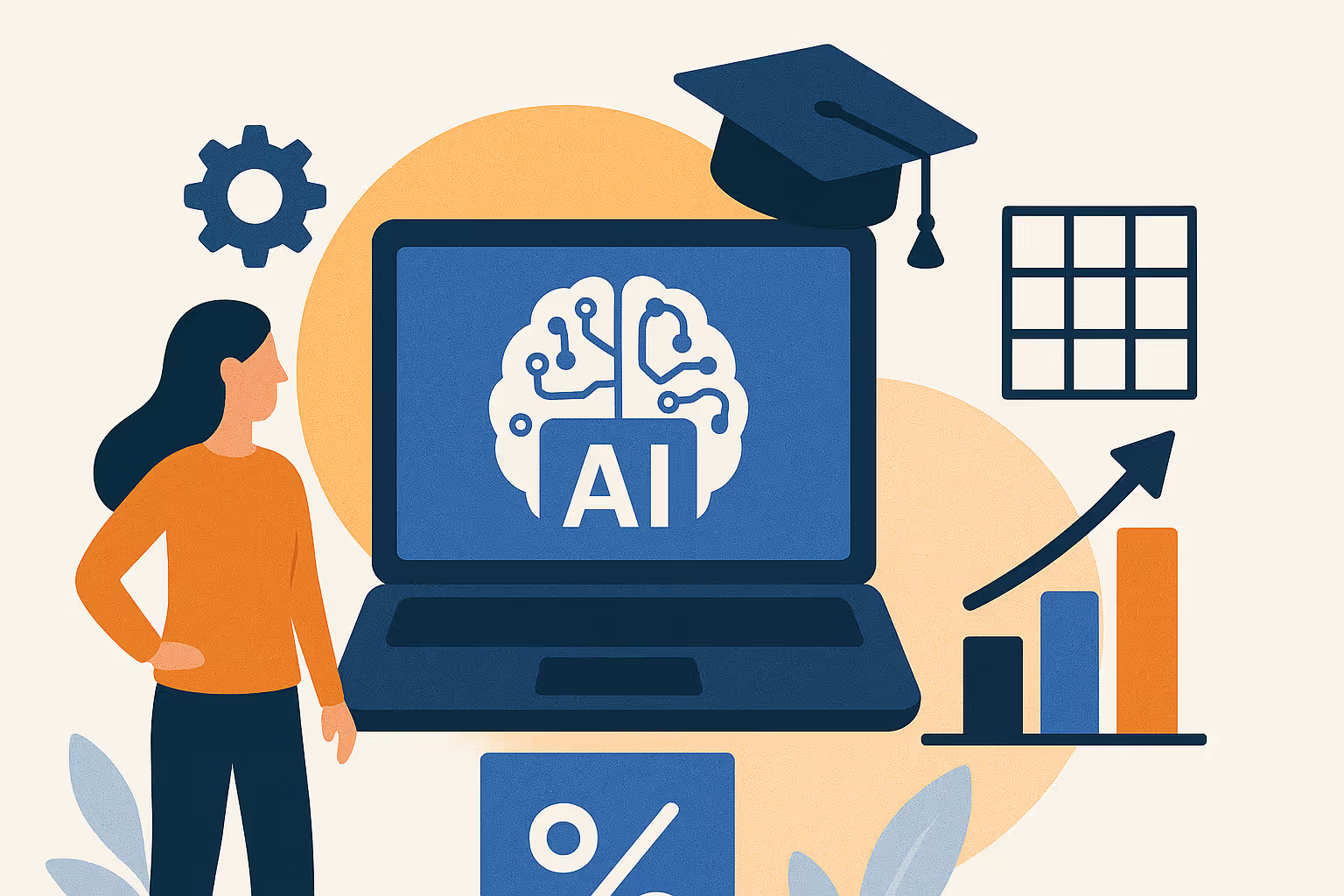About the Blog
Higher education analytics help institutions make data-driven decisions to improve student success, streamline operations, and enhance recruitment and retention efforts. Advanced techniques like predictive modeling, engagement tracking, and AI-driven insights enable colleges and universities to better support students and drive institutional growth.
Many industries rely on analytics to drive decision-making and improve performance. In healthcare, data analytics helps track patient outcomes, optimize treatment plans, and improve hospital efficiency. Retail companies use analytics to understand customer behavior, personalize marketing, and manage inventory. In finance, banks and investment firms analyze data to detect fraud, assess risk, and predict market trends.
Even sports teams leverage analytics to enhance player performance and game strategy. These industries use data to make smarter, faster decisions that improve efficiency and outcomes. Similarly, in education, data analytics can be applied across the student lifecycle—from recruitment and admissions to academic success and career placement—helping institutions better support students, identify challenges early, and improve overall retention and success rates.
Strategies for Higher Education Analytics
Student success is a top priority for higher education institutions, as it directly impacts retention, graduation rates, and long-term career outcomes. Analytics play a crucial role in helping colleges and universities track student progress, identify at-risk students, and implement support strategies to improve academic performance. By analyzing data on enrollment, engagement, and achievement, institutions can make more informed decisions that enhance both student experiences and operational efficiency.
Data can be used at every stage of the student journey — from student recruitment strategies and admissions to course completion and career placement—allowing schools to personalize support, optimize resources, and ultimately drive better outcomes for students and institutions alike. In this post, we’ll explore how data analytics is shaping student success and the future of higher education.
1. Student recruitment
The student recruitment stage is where institutions attract, engage, and convert prospective students into applicants.
Higher ed analytics help refine this process by identifying the right audiences and optimizing outreach strategies. Data-driven practices targeting uses demographic and behavioral insights to personalize marketing efforts, ensuring messages reach the most interested students. Social media analytics tracks engagement and sentiment, helping schools refine their content and advertising strategies. Website analytics provides insights into visitor behavior, showing which pages attract the most interest and where prospects drop off in the application process.
By leveraging these techniques, institutions can improve recruitment efforts, increase applications, and attract students who are the best fit for their programs.
2. Financial support
The financial support stage is critical for students as they evaluate tuition costs, scholarships, and financial aid options to determine if they can afford their education.
At this stage, students seek transparency, affordability, and personalized funding options. Higher ed analytics helps institutions streamline this process through cost-effectiveness analysis, which assesses financial aid packages to maximize impact while maintaining institutional budgets. Automated financial aid processing speeds up application reviews, reduces errors, and ensures students receive timely assistance.
3. Admissions process
The admission stage is where institutions review applications, assess student qualifications, and make enrollment decisions.
Students at this stage seek clarity on acceptance criteria, timelines, and their chances of admission. Higher ed analytics enhances this process with techniques like application funnel analysis, which tracks where applicants drop off to improve conversion rates. Predictive enrollment modeling uses historical data to forecast which applicants are most likely to enroll, helping schools allocate resources effectively. Demographic segmentation analyzes applicant data to identify trends and tailor outreach efforts.
These analytics-driven strategies help institutions streamline admissions, improve yield rates, and create a more diverse and well-matched student body.
4. Student retention
Student retention is crucial for higher education institutions, as it directly impacts graduation rates, reputation, and financial stability.
To improve retention, schools use analytics-driven strategies like early warning systems, which identify at-risk students based on academic performance and engagement levels. Engagement tracking monitors participation in classes, extracurricular activities, and online learning platforms to detect disengagement early. Student success dashboards compile real-time data on grades, attendance, and support services to help advisors provide timely interventions.
5. Alumni relations and engagement
Alumni engagement is vital for higher education institutions, as it strengthens school reputation, boosts fundraising efforts, and creates valuable networking opportunities for students and graduates.
Analytics plays a key role in enhancing alumni relations through techniques like alumni network analytics, which tracks engagement levels and identifies the most active graduates. Donation prediction models analyze past giving patterns to help schools target potential donors more effectively. Career path tracking monitors alumni success, allowing institutions to showcase achievements and refine career services.
Higher Ed Analytics Tools
Learning management systems analytics
LMS (Learning Management System) analytics track student interactions, performance, and engagement within online learning platforms. Key functions include monitoring course participation, assessing learning progress, and identifying struggling students through data-driven insights.
These tools help institutions improve instruction, personalize support, and enhance student outcomes by providing real-time analytics. Examples like Canvas, Blackboard, and Moodle offer features such as engagement tracking, automated feedback, and predictive analytics to support academic success.
Student information systems (SIS)
Student Information Systems (SIS) are centralized platforms that manage student data, from enrollment and academic records to financial aid and course registration. Key functions include tracking student progress, automating administrative tasks, and generating reports for decision-making.
These tools help institutions streamline operations, improve data accuracy, and enhance student support by providing a comprehensive view of each learner’s journey. Examples like Banner, PeopleSoft, and Jenzabar offer robust analytics features, helping schools make data-driven decisions that improve student success and institutional efficiency.
Predictive analytics software
Predictive analytics software uses historical data, machine learning, and statistical models to forecast future outcomes and trends. Key functions include identifying at-risk students, predicting enrollment trends, and optimizing resource allocation.
These tools help higher education institutions make proactive decisions, improve student retention strategies, and enhance overall academic performance. Examples like RapidMiner, IBM SPSS, and SAS Advanced Analytics provide institutions with insights that drive strategic planning and student success initiatives.
Business intelligence tools
Business intelligence (BI) tools collect, process, and analyze data to provide actionable insights for decision-making. Key functions include data visualization, reporting, and trend analysis, helping institutions monitor performance indicators like enrollment rates and student engagement.
In higher education, BI tools support data-driven strategies for improving operations, optimizing recruitment efforts, and enhancing student success. Examples such as Tableau, Microsoft Power BI, and Domo help universities turn complex data into meaningful insights for better institutional planning.
Survey and feedback tools
Survey and feedback tools collect student, faculty, and alumni input to assess satisfaction, engagement, and institutional effectiveness. Key functions include survey creation, real-time response tracking, and sentiment analysis to understand trends in student experience.
Institutions can gather valuable insights to improve programs, enhance teaching strategies, and strengthen student support services. Popular examples like Qualtrics, SurveyMonkey, and Google Forms allow schools to capture feedback efficiently and make informed improvements.
Challenges in Higher Education Analytics
Using analytics in higher education comes with challenges like data privacy concerns, complex data integration, the need for skilled staff, and ethical considerations.
Protecting student data requires compliance with regulations and strong cybersecurity while integrating multiple data sources can be streamlined with cloud-based solutions. The skills gap can be addressed through staff training and AI-driven tools, and ethical concerns like biased algorithms should be managed with transparency and clear policies.
By implementing these solutions, institutions can fully leverage analytics to improve student success and operational efficiency.
Higher Ed Analytics Future Trends
The future of higher ed analytics is set to be more intelligent, efficient, and student-focused, with emerging trends reshaping how institutions use data. AI-driven analytics will enable more precise predictions for student success, enrollment trends, and institutional planning.
Real-time data collection will provide instant insights, allowing schools to identify and address issues like student disengagement or academic struggles as they happen. Automated reporting will streamline decision-making by reducing manual data processing and delivering actionable insights faster.
As these technologies advance, higher education institutions will be able to make more informed, data-driven decisions that enhance student experiences and operational efficiency.
Conclusion
Higher education analytics is transforming how institutions recruit, support, and retain students, making data-driven decision-making more critical than ever.
By utilizing predictive modeling, engagement tracking, and AI-driven insights, schools can personalize student experiences, improve academic outcomes, and optimize operations. The future of analytics in higher ed promises even greater efficiency with real-time data collection and automated reporting, helping institutions stay agile and proactive. As these technologies continue to evolve, embracing data analytics will be key to driving student success and institutional growth.
Stay ahead of the latest trends and strategies by exploring more higher-ed insights at Enrollify.
Frequently Asked Questions
What are the different types of analytics in higher education?
The different types of analytics in higher education include descriptive analytics (which summarizes past data), predictive analytics (which forecasts future trends), and prescriptive analytics (which recommends actions based on data insights).
What are the 3 common categories of data analytics?
The three common categories of data analytics are descriptive analytics, predictive analytics, and prescriptive analytics, each serving a unique role in interpreting and utilizing data for decision-making.
How do universities use data analytics?
Universities use data analytics to track student performance, improve recruitment and retention strategies, optimize resource allocation, and enhance overall institutional effectiveness.










